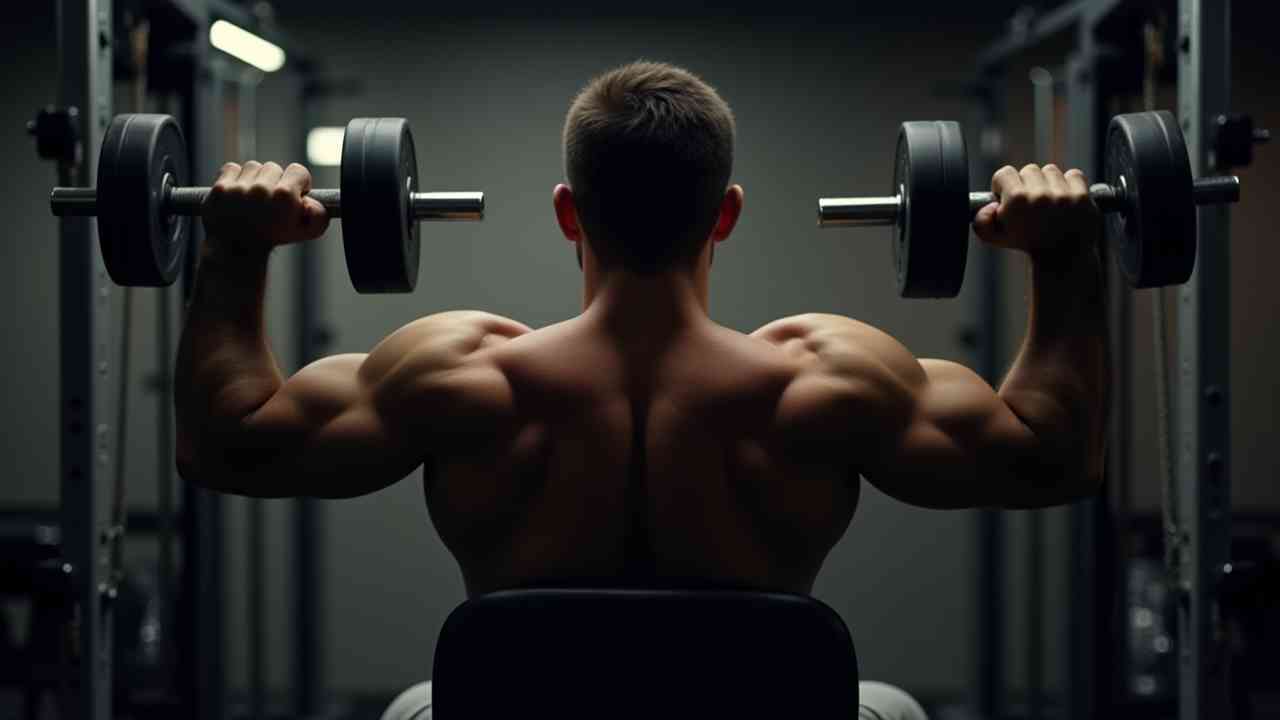
Shoulders Exercises with Weights: The 7 Best Lifts 💪🔥
The Anatomy of Shoulder Training
The shoulder joint is one of the most mobile, yet complex, joints in the human body. Effective shoulder training requires addressing all three heads of the deltoid muscle. Training must also incorporate exercises that strengthen the rotator cuff for injury prevention 🛡️.
The Three Deltoid Heads
1. Anterior Deltoid (Front): Responsible for lifting the arm forward (flexion). Primarily worked by pressing movements.
2. Medial Deltoid (Side): Responsible for lifting the arm out to the side (abduction). Key for shoulder width and "cap" aesthetic.
3. Posterior Deltoid (Rear): Responsible for pulling the arm backward (extension). Often the most neglected head, crucial for posture and stability 🧠.
Category 1: Compound Lifts for Mass and Strength
Compound exercises involve multiple joints and allow you to lift the heaviest weight. These are the foundation for building overall shoulder mass and raw strength 📈.
1. Barbell Overhead Press (OHP)
The OHP is the single best exercise for overall shoulder development. It primarily targets the anterior deltoids and triceps 💪. Stand with the barbell racked at the clavicle. Press the bar straight overhead until the arms are fully extended. Maintain a tight core and glutes throughout the movement. This prevents excessive arching of the lower back effectively.
2. Seated Dumbbell Shoulder Press
Performing the press seated eliminates the use of the legs and isolates the deltoids. Use dumbbells and press them vertically from the shoulder level. This lift places immense stress on the anterior and medial deltoids. It allows for a greater range of motion compared to the barbell OHP.
Category 2: Isolation Lifts for Shape and Definition
Isolation exercises target specific heads of the deltoid. These are necessary for achieving a round, three-dimensional shoulder look.
3. Dumbbell Lateral Raise (Medial Head)
The Lateral Raise is essential for building the medial deltoid head. Stand with a dumbbell in each hand. Keep a slight bend in your elbows. Raise the dumbbells straight out to the sides until your arms are parallel to the floor. Focus on leading with the elbows. Avoid swinging the weights and use a controlled, slow descent 🐢.
4. Front Dumbbell Raise (Anterior Head)
This exercise isolates the anterior deltoid for shape. Stand and lift the dumbbells straight up in front of you. Stop when the weights reach shoulder height. This movement should be controlled and deliberate. Avoid using heavy weights that encourage swinging and momentum.
5. Reverse Pec Deck or Face Pulls (Posterior Head)
The posterior deltoid is best targeted by reverse movements. Use the reverse pec deck machine or perform Face Pulls with a rope attachment 💡. These pulling movements strengthen the rear shoulder and upper back. This corrects the imbalance caused by heavy bench pressing. Strong rear delts improve posture and reduce the risk of injury significantly.
Category 3: Rotator Cuff and Stability
These exercises use light weights and focus on stabilization. They are crucial for improving shoulder joint health and mobility. A strong rotator cuff prevents major injuries.
6. External Rotation (Rotator Cuff)
Use a very light dumbbell (2 to 5 lbs) or a resistance band. Hold your elbow bent at 90 degrees and rotate your forearm away from your body. This directly strengthens the muscles responsible for stabilizing the shoulder joint 🦴.
7. Arnold Press
The Arnold Press is a unique variation of the shoulder press. It targets all three deltoid heads effectively. Start with the dumbbells in front of your chest, palms facing your body. As you press up, rotate your wrists so the palms face forward at the top. This rotation increases the time under tension for the medial head 🔄.
Conclusion: Balance and Consistency are Key
The best shoulder workout combines heavy compound presses (OHP, Seated Press) with targeted isolation raises (Lateral, Front, Reverse). Prioritize form and consistent progressive overload. Always include light rotator cuff work to prevent injury and ensure long-term shoulder health 🌟.